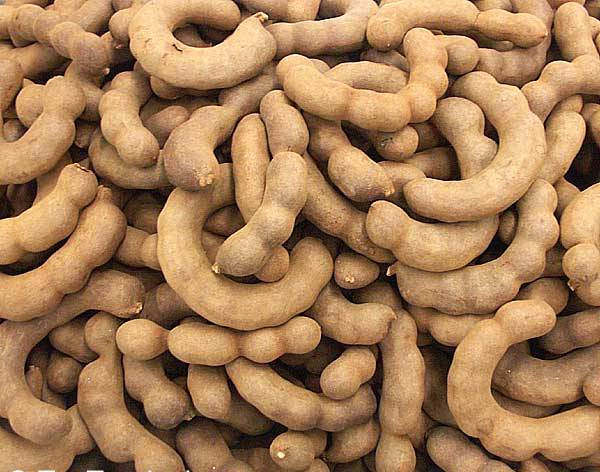
Parts used in tamarind:
The fruit is located within a century works such as dandruff and maintained inside sowing.
There are three types of Indian fig:
• The first type: located in parts of Eastern India, characterized by long century, contains 6-11 corn.
• Type II: located in Western India, characterized by small century contains about 4 seeds.
• Type III: century is characterized by beautiful pink color.
Home-history of altmerhndi
India, Eastern Tropical Africa, cultivated in the West Indies, Southeast Asia, the Arab was the first Indian rebellion drove back home and to the world and called "Indian fig". An Arabic translation of the Indian name is located in the mythology of India, where Hinduism believes that Indian fig and symbolizes marriage accompanied by machine as blades, which are events commemorating each year in the month of November (November) in India.
During the Victorian era was the English who roam in areas of Tibet are centuries tamarind green in their ears to protect themselves against repeated raids and harassment of people of their country where locals believed that centuries dates green inhabited by demons and malevolent Indian and cynical and authoritarian.
Installation of an Indian rebellion
20% of fruit acids include:
• Citric acid.
• Acid tertrik.
• Acid the King.
• 35% grape sugar.
• Potassium.
• Baytrartarit.
• Chewing gum.
• As figs.
• Fibers.
• Small quantities of cogeneration which contain: limonene, and giraniol. (The date alimonin material and Indian oil acid reduce the growth of breast tumors in rats, particularly malignant and prevent proliferation of these tumours).
• Vinyl brobanoidat, including:
Safrole, will promote you, ethyl acid, dimethyl slasilit sinmit (House of pain, marek, wekhavd), berasin, double thiazol.
Benefits and uses an Indian medical insight
-Evergreen tree, paper-intensive, obscure sunlight from below, so don't grow many plants are used medically as a food and flavoring in cooking, and is either juice or take the form of PuTTY, characterized by tastes acid when added to foods, frequently used in South India especially with lentils where attending famous meal (gograti), lentils eaten daily to India, Indian curry confuses dates with also attends a special sauce and fruits Herbs and spices. Be an Indian rebellion. Using an Indian rebellion to give strong acidity, real and sincere than acetic acid acidity and lemon. Enter into combination special sauces, eaten with meat, fish and birds.
-Date Indian albektin who enters in the manufacture of jams and alsharabat and gelatin.
-In our Arabic using dates as popular Indian drink. (Indian fig texture blend with water and sugar, and add the rosewater) and drink free time summer and during the fasting month of Ramadan to many benefits, including breaking thirst.
And benefits:
1. break the thirst.
2. a mutant such heat, irrigated in cases of high temperature and low, reduce heat, and cool the body, used in summer to prevent free and damaging shifts such as "Sun stroke", in which case you get sick from exposure to heat and sunlight for prolonged periods, (patient temperature rises, the patient cannot take root because that temporarily defect affects the brain Centre sweating). Almithayl slisilat acids in particular is responsible for reduction of body temperature.
3. sterile mild and gentle use the gargle in tonsillitis, kmghatas is also used for eye, sterilized and prevent infection and ulcers.
4. the digestive system.
5. a tonic for the liver and gall bladder, give in cases of alrikan.
6. tenderized nice nature, exceptional situation the acids, since it usually causes only stomach kbodah, Indian fig leaves this impact.
7. address the cough and trachea diseases.
8. earning urine, removing sand and gravel.
9. a nice calming of the nerves, especially sister removes headache types.
10. Some Indians suggest the use of an Indian rebellion in treating sexual cooling on women, and accelerate attainment of orgasm, as some cases of infertility treated by feminist (diseases of the uterus and ovarian) date Indians "bathtubs".
0 comments:
Enregistrer un commentaire